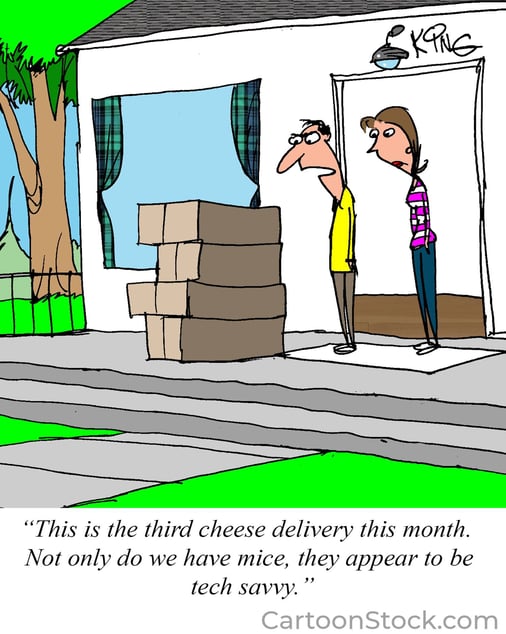

You’re Invited!
DP Solutions 50th Anniversary Celebration
Thursday September 30th from 3:00 to 7:00pm.
Join us for our open-house “through the decades” themed anniversary celebration to help us cheers to 50 years of business.
Welcome New Clients!

|

|

|

|

|

|
Beat The Heat! How The Dog Days Of Summer Can Wreak Havoc On Your Technology
The dog days of summer are here, and it’s hot out! Homeowners and business owners alike are bracing for their upcoming power bills as they run their air conditioners around the clock trying to keep cool. But for many business owners, it’s not just about keeping your team cool – it’s also about keeping your technology cool.
Every piece of technology you use is susceptible to heat damage. Sometimes they overheat due to internal issues. Maybe they’re processing a lot of data. Or maybe the internal cooling system isn’t enough. But they can also overheat due to external issues, such as high summer temperatures and inadequate air conditioning.
If heat overwhelms your systems, it has the potential to knock out your business. If computers go down or servers can’t run efficiently due to heat, it can be a costly disaster.
The average computer is built to work in external temperatures of
50 to 82 degrees Fahrenheit. Laptops and tablets can handle 50 to 95 degrees Fahrenheit.
Every business should be aware of just how much damage heat can cause. For example, heat can damage individual components in your devices. There are records of graphic cards bursting into flame as a result of overheating and heat-related electrical issues. These components are designed to withstand high heat, but they can only take so much.
Heat can also disrupt productivity. It’s one thing if your business is warmer than usual and you have fans running. It can make work harder. But heat slows down devices. They cannot run as efficiently and, as a result, programs and apps will struggle to run. In some cases, they might not be able
to run at all because they require a certain amount of data processing that is negatively impacted by too
much heat.
If your systems are disrupted or damaged, you can also lose critical data. Heat can damage hard drives and solid-state disk drives, leaving you without access to your data. Sometimes, with proper cooling, this data can be recovered, but if the heat and damage persist, the data may be unrecoverable if you don’t have a backup.
What’s the next step? Every business needs to fully understand its cooling needs. It’s one thing to cool people working in an office. It’s something else entirely to cool a server room. Ask yourself
questions like:
On top of this, it’s critical to ask questions about your data security needs:
You never have to compromise your data or your business. There are countless solutions on the market today to help you protect your most valuable assets – and to help with your technology cooling needs. As you navigate the dog days of summer, remember you have options. A managed services provider (MSP) or an experienced IT services firm can help you determine if your tech is as cool as it should be. They can help you ensure the longevity of your technology and keep your data safe.

Break The Bottleneck
The X-Factor For Exponential Advantage
Breaking the bottleneck starts with asking the right questions. Innovators ask what could be, not what is. They ask, “How can I find greater potential from every person, situation, process, experience and outcome?”
Before you even start the process, you have to understand the difference between execution vs. innovation. If you focus only on execution, you won’t get exponential leverage. Carve out a small amount of time for innovative thinking and you will scale the company. For instance, your planning sessions – whether they’re weekly, monthly, quarterly, etc. – should break down
this way:
One area we encourage people to really think about is industry bottlenecks. What are five industry bottlenecks you face (including your top three competitors)? We like to break it down into five diagnostic levers:
For example, when it comes to eliminating expenses, you can look at your top five costs or how those costs relate to your revenue. Your main expense may be labor or, getting more specific, revenue per employee. Of course, you don’t want to just eliminate labor – you want to look at ways to increase productivity.
What is getting in the way of customers buying or using your products or services when or how they want to? Write down five industry bottlenecks related to that. Jumping into customers’ psychological barriers, why might they be embarrassed or unsure about using your products or services? What are five psychological bottlenecks in your industry?
We also look at the hearts and minds. What can you do to win the hearts and minds of a key constituency group that would really propel your company to growth? It doesn’t just mean winning the hearts and minds of customers, but those of your workers. Consider Chick-fil-A vs. McDonald’s. Chick-fil-A delivers a high level of service because their workforce is happy. Their profit per square foot basis is more than that of McDonald’s, and they’re only open six
days a week.
Lastly, in eliminating negative externalities, look at the “harm” your business may do to things like your community or environment. What can you do to mitigate these things? This isn’t always an easy one to figure out
or answer – and there might not even be anything. But look for things that have the potential to do harm, whether it is your community, customers or even the
business itself.
P.S. See the full Petra Coach webinar for Break The Bottleneck: The X-Factor For Exponential Advantage at PetraCoach.com/break-the-bottleneck-the-x-factor-for-exponential-advantage-with-barrett-ersek.

Barrett Ersek is a serial entrepreneur and regular speaker on business innovation, with an expertise in the green industry. He created his first company at age 17 and later founded Holganix, a manufacturer of 100% organic plant probiotics. He has lectured at the London School of Business, the India School of Business and the Massachusetts School of Business. He’s also the co-author of the Harvard Business Review article Break Your Industry’s Bottlenecks.

While many have taken a proactive approach to security management, millions of individuals and businesses are underprepared to deal with the modern threats facing them. The first step to addressing that is to take a step back and figuring out where your specific risks are and what controls best address those risks.
This has brought many businesses to start looking at more sophisticated solutions that take unconventional and aggressive approaches to cyber-security, such as Security Information and Event Management solutions (SIEM) as well as Security Operation Centers (SOC).
But before you go down this path and start making some significant decisions that have bearing on both your cyber risks as well as your bottom line, let’s take a moment to get into what SIEM/SOC are and where they are a good fit.
Read the full article here:

Why you shouldn’t do personal information quizzes on Facebook
Many people on social media are friendly and open people in real life, and perhaps they allow that good nature to extend a little too far into social media by sharing too much information about their lives.
Information shared on social media is out there, no matter what privacy settings you set up or who you are “friends” with. Once that information is placed on Facebook or LinkedIn, there may as well be a permanent and public record.
So when you see people sharing quizzes about the first car they drove, or the name of their high school, or other personal details, you might wonder why this could be a security risk.
Well, the fact is that a lot of these personal minutiae are used to identify you as part of security questionnaires to verify personal information. If you have ever lost your credentials to a particularly sensitive website and need to get in, you might be asked this information if you volunteered it to identify yourself in case of emergency. Criminals could also use this information to pretend to be you and get into your accounts.
Be mindful of what you share online. You could be giving up more than you intend.